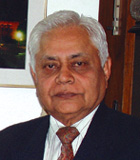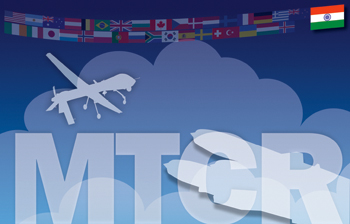INDIAN ARMED FORCES CHIEFS ON
OUR RELENTLESS AND FOCUSED PUBLISHING EFFORTS

SP Guide Publications puts forth a well compiled articulation of issues, pursuits and accomplishments of the Indian Army, over the years

I am confident that SP Guide Publications would continue to inform, inspire and influence.

My compliments to SP Guide Publications for informative and credible reportage on contemporary aerospace issues over the past six decades.
- Prime Minister witnesses 'Bharat Shakti' – a Tri-Services Firing and Manoeuvre Exercise in Pokhran, Rajasthan
- Interim Defence Budget 2024-25 — An Analysis
- Union Defence budget 2024
- Prime Minister Modi Commemorates Indian Navy Day in a Grand Ceremony
- Prime Minister Modi Flies in the LCA Tejas
- New Chapter in India-Italy Defence Ties
- Airpower beyond Boundaries
Membership of MTCR for India

The aim of the MTCR is to restrict the proliferation of missiles, complete rocket systems and unmanned air vehicles capable of carrying weapons of mass destruction
While the nation was in the process of coming to terms with the disappointment of failure of the high-profile and vigorous diplomatic effort by the NDA Government to become a part of the Nuclear Suppliers Group (NSG), on June 27, 2016, came the somewhat encouraging news from Paris that India had been successful in joining the Missile Technology Control Regime (MTCR) as a full member. Since the conclusion of the Indo-US Civil Nuclear Deal between President George Bush and Prime Minister Dr Manmohan Singh nearly a decade ago, India has been making efforts to be a part of these two export control regimes as also of the Australia Group and the Wassenaar Arrangement that together regulate the conventional, nuclear, biological and chemical weapons and technologies. As per the Ministry of External Affairs, it is believed that India’s membership of the MTCR would help strengthen global non-proliferation objectives. India’s entry into the MTCR is expected to remove or reduce impediments for the nation to export high-tech missiles such as BrahMos to other countries as well as purchase the Predator unmanned combat aerial vehicles from the US. However, fresh policy framework would have to be drawn up and implemented.

Established in 1987, the MTCR is an informal and voluntary partnership that with the entry of India now consists of 35 countries. The aim of the MTCR is to restrict the proliferation of missiles, complete rocket systems and unmanned air vehicles (UAVs) capable of carrying weapons of mass destruction. In particular, the regime keeps a check on transfer of missiles and UAVs capable of carrying a payload of at least 500 kg to a range of 300 km. The group also focuses on any equipment, software or technology that can enable a nation to produce such systems. MTCR partner nations encourage all countries to observe guidelines promulgated by the regime on transfers of missiles and related technology as a contribution to common security. A country can choose to adhere to the guidelines without being obligated to join the group and a number have done so. The partner nations of the regime welcome opportunities to conduct broader dialogue on proliferation issues with such countries.
In June 2015, India had applied for membership of the MTCR with support from the US and France. The application was considered in the 29th plenary session of the MTCR that was held in Rotterdam in October 2015. However, India’s maiden attempt at that time to be a part of the MTCR had not succeeded. It is generally believed that the successful entry into the MTCR will pave the way for India getting membership of the NSG.
However, attempts at entry by India into the NSG may be laced with hurdles as China is seeking similar status for Pakistan. Strangely, this is despite Islamabad’s persistent and consistent record in both nuclear and missile proliferation. India faced stiff opposition from China and a few other countries and the fact that it is not a signatory to the Nuclear Non-Proliferation Treaty was a major issue. It was used by these nations for thwarting India’s bid at the Seoul meeting despite the strong backing by the US. However, the nation need not lose hope as there will be fresh opportunities in not too distant a future for entry into the NSG. However, the major diplomatic challenge before the nation would be to negotiate the next round of negotiations for entry into the NSG without further escalating animosity with China.





